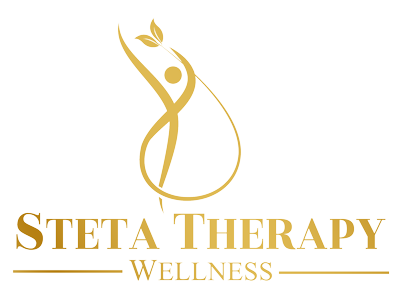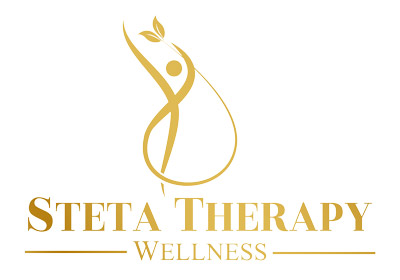
28 Oct A Trauma-Informed Guide to Halloween Fun
Hey there, fellow Halloween enthusiasts!
If you’re like me, you love the spooky season! Although at times, it can be hard to know the healthy boundary of what’s “just enough” scary and you can sometimes find yourself a bit on edge. Maybe you have some trauma in your past, or anxiety likes to crash your party. Don’t worry – you’re not alone, and you don’t have to miss out on the celebrations! This guide is all about navigating the tricks and treats of Halloween when your brain might be playing some not-so-fun tricks of it’s own or has a difficult time recognize what’s an enjoyable experience and what experience actually starts to send danger cues to the nervous system. We’ll explore ways to enjoy the festivities without triggering your anxiety or PTSD, so you can focus on the sweeter side of the season. Ready to make Halloween a treat again? Let’s dive in!
Understanding Triggers: How Halloween Can Be Overwhelming
The Spooky Side of Trauma
Halloween, with its focus on frights and scares, can be a challenging time for those with trauma histories. The abundance of horror-themed media, decorations, and events can fuel obsessive thoughts and anxieties, turning a fun holiday into a minefield of triggers. You might find yourself overwhelmed by seemingly harmless decorations or costumes that remind you of past traumas. Or you might crave and enjoy the scare, but find your body has a difficult time finding it’s way back to relaxation!
The Body’s Response to Fear
When you encounter a trigger, your body’s “fight or flight” response kicks in. This natural reaction to perceived danger can be particularly intense for trauma survivors. During Halloween, you may experience elevated cortisol levels, leading to symptoms of hypervigilance, restlessness, and fatigue. It’s important to recognize that these reactions are normal and valid.
Navigating the Unpredictable
The unpredictable nature of Halloween activities can be especially challenging for those seeking control and stability in their environment. Strangers coming to your door for trick-or-treating or encountering people in scary costumes can trigger startled reactions. Remember, it’s okay to set boundaries and to create a safe space for yourself during this time. A trauma-informed approach to Halloween means acknowledging these challenges and finding ways to engage with the holiday that prioritize your mental health.
Creating a Trauma-Informed Halloween Plan
Halloween can be a challenging time for those with a history of trauma, anxiety, or PTSD. Creating a trauma-informed plan is essential to navigate the holiday safely and enjoyably, whether it is for yourself or your child.
Here’s how you can prepare:
- Identify Triggers – Start by recognizing what aspects of Halloween might be triggering for you or your child. Common external triggers include loud noises, unexpected surprises, crowded spaces, or graphic imagery. Once you’ve identified these, you can take steps to minimize their impact.
- Establish Boundaries – Don’t hesitate to set clear boundaries with friends, family, and coworkers. It’s okay to opt-out of activities that make you uncomfortable. Trauma-informed approaches emphasize the importance of allowing individuals to choose their level of participation without pressure.
- Create a Safe Space – Designate a quiet area in your home where you or your child can retreat if you feel overwhelmed. This could be a cozy corner with soft lighting, comfortable seating, and calming activities. Having a safe space can provide a sense of control and help manage anxiety.
- Plan Alternative Activities – If traditional Halloween events are too stressful, consider planning alternative activities that align with your or your childs’ comfort level. This might include watching non-scary movies, crafting, hosting a small gathering with trusted friends. Remember, there’s no one-size-fits-all approach to celebrating Halloween. Prioritize your mental health and well-being above all else.
- Costume Ideas That Avoid Common Triggers – Halloween costumes can be a source of anxiety for those with trauma histories or mental health concerns. By choosing outfits mindfully, you can participate in the festivities while avoiding potential triggers. Here are some trauma-informed costume ideas to consider:
- Common-First Characters – Opt for costumes made from soft, breathable fabrics like cotton or fleece. Animal onesies or character-themed pajamas provide a cozy, non-restrictive option that won’t overwhelm your senses. For a DIY approach, start with comfortable clothing and add simple accessories like felt ears or a cape.
- Mask-Free Alternatives – Instead of claustrophobic masks, try face paint or makeup to create your character. If you’re not comfortable with anything on your face, consider costumes that focus on clothing, like superheroes or book characters. Remember, your mental health comes first – it’s okay to skip face coverings entirely.
- Empowering Choices – Select costumes that make you feel strong and confident. Avoid outfits that reference traumatic events or make light of mental health issues. Consider positive role models, nature themes, or your favorite hobbies as inspiration. The goal is to choose something that aligns with your values and promotes a sense of safety. By prioritizing comfort and personal boundaries, Halloween can be enjoyed while respecting mental health needs. Remember, there’s no shame in adapting traditions to suit you or your families well-being.
- Alternatives to Trick-or-Treat – Halloween doesn’t have to revolve around traditional door-to-door candy collecting. For those who find trick-or-treating overwhelming or anxiety- inducing, there are plenty of alternative ways to enjoy the holiday spirit while staying within your comfort zone.
- Create a Cozy Halloween Haven – Transform your living space into a festive sanctuary. Decorate with soft lighting, autumn-scented candles, and non-scary Halloween decor. This trauma-informed approach allows you to control your environment and avoid potential triggers. Invite close friends or family for a small gathering focused on comfort and connection.
- Engage in Creative Halloween Activities – Channel your Halloween spirit into creative pursuits. Carve pumpkins, craft spooky (or not-so-spooky) decorations, or bake themed treats. These activities can be both soothing and enjoyable, providing a sense of accomplishment without the stress of public interactions. Focusing on creativity rather than fear can help reframe the holiday in a positive light.
- Host a Halloween Movie Marathon – Curate a list of Halloween-themed movies that match your comfort level, from family-friendly classics to mildly spooky films. Create a cozy viewing area with blankets and pillows. This allows you to enjoy the holiday atmosphere while maintaining control over your surroundings and exposure to potentially triggering content. Remember to practice grounding techniques if you feel overwhelmed, helping you stay present and calm throughout the evening.
Making Your Halloween Party Trauma-Informed
Halloween parties can be a blast, but they can also be overwhelming for those with trauma histories. By taking a few simple steps, you can create a fun and inclusive atmosphere that’s mindful of everyone’s needs.
Set the Right Tone
Start by avoiding decorations or costumes that might trigger traumatic memories, such as fake weapons or gory scenes. Instead, opt for friendlier themes like autumn harvest or magical fantasy. Consider having a costume-optional policy to ensure everyone feels comfortable.
Create Calm Zones
Designate quiet areas where guests can take breaks if they feel overwhelmed. Stock these spaces with comfy seating, soft lighting, and calming activities like coloring books or fidget toys. This gives people a chance to regulate their emotions and return to the festivities when ready.
Offer Varied Activities
Plan a mix of high- energy and low-key activities to suit different comfort levels. Try STEM-focused options like making fluffy zombie slime or candy catapults, alongside traditional games like bobbing for apples. This variety ensures everyone can find something enjoyable without feeling pressured.
Mindful Refreshments
Provide a balance of treats and healthier options to avoid sugar overload. Consider offering Halloween-themed fruits and veggies alongside candy. Remember, excessive sugar can sometimes exacerbate anxiety or triggers mood swings in those with mental health concerns.
Conclusion
Remember, you’ve got this! Halloween doesn’t have to be a nightmare for those of us with trauma histories. By planning ahead, setting boundaries, and focusing on the fun aspects you enjoy, you can create a spooky season that works for you. Don’t be afraid to sit out traditions that feel uncomfortable or create new ones that bring you joy. Your mental health matters more than meeting others’ expectations. Reach out to supportive friends, practice self-care, and give yourself grace if things get overwhelming. With these trauma-informed tips in your treat bag, you’re all set for a Halloween that’s more treat than trick. Stay safe and have fun out there!


Sorry, the comment form is closed at this time.